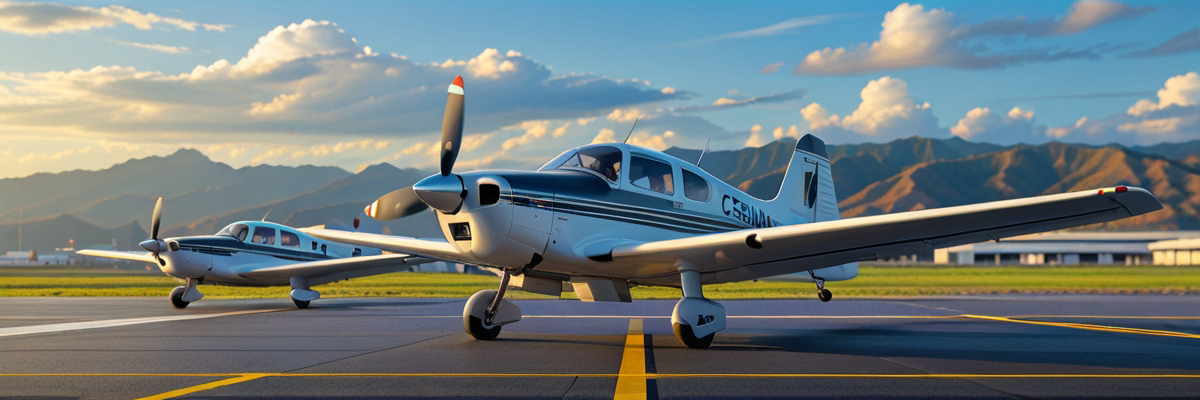
There’s something intrinsically exhilarating about venturing into the Okinawan sky, with its ever-changing blend of vibrant blues and dense, brooding clouds. The unpredictability of Okinawa’s weather brings a mix of excitement and challenge that shapes each flight from the Kadena Air Base into a unique adventure. Whether you’re a veteran pilot or finding your footholds in this delightful and demanding journey, understanding the weather here is vital.
1. Understanding Okinawa’s Weather Dynamics
Okinawa serves up a smorgasbord of weather patterns, with its subtropical climate capable of transforming skies from clear to stormy with little warning. The island’s weather is largely shaped by the seasonal monsoons and typhoons, making situational awareness a pilot’s best friend. During summer months, the humidity can be intense, leading to quickly forming cumulonimbus clouds that pose significant challenges for VFR operations. As mentioned in the Aeronautical Information Manual (AIM), being aware of these weather services and maintaining a flexible flight plan is crucial to safety (AIM 1-5: Weather Services).
To successfully navigate these changes, it’s essential to blend local knowledge with advanced forecasting tools. The Kadena Aero Club emphasizes thorough planning. By using reliable weather resources and incorporating the experiences of more seasoned pilots, new members can mitigate risks while enhancing their flying proficiency.
2. Prepping for Okinawan Weather Challenges
Preparation is key when flying in Okinawa. Pre-flight weather checks become a ritual that no pilot can afford to skip. As advised, checking METARs (Meteorological Aerodrome Reports) and TAFs (Terminal Aerodrome Forecasts) should form the backbone of your pre-flight routine. These provide invaluable immediate snapshots and forecasts of weather conditions that you might encounter along your chosen flight path.
Preparing for Weather Uncertainty:
- Tip 1: Regularly review METARs and TAFs to stay updated on weather conditions.
- Tip 2: Avoid last-minute flights during the typhoon season and have contingency plans in place.
Many pilots recount tales of seemingly serene afternoons turning into unexpected adventures, thanks to the rapid shifts in weather. I remember one flight where what started as a pleasant afternoon soon required me to navigate through sudden gusts and lowering skies. Thankfully, the club’s guidance on weather briefings meant that I was prepared, making the situation manageable, if thrilling.
3. Embracing the Challenge: Training and Techniques
To conquer the unpredictability of Okinawan weather, embrace it as a tool for learning. Regular flying sessions under varied conditions can transform initial uncertainty into confidence. The Kadena Aero Club supports this developmental path, frequently offering training that keeps pilots sharp on both VFR and IFR (Instrument Flight Rules) skills. Utilizing resources like the Airplane Flying Handbook (AFH), members can delve into managing risks and honing situational awareness (AFH Chapter 17).
Training Recommendations for Weather Mastery:
- Tip 1: Engage in regular simulated instrument practice to enhance situational awareness.
- Tip 2: Participate in club-sponsored workshops focused on weather pattern recognition and response strategies.
Personally, the experience of facing unexpected weather has made me value every new lesson. It’s a humbling reminder of how nature demands our utmost respect and preparation.
4. A Memorable Journey Through Okinawa’s Skies
Of the countless flights I’ve embarked upon, one particularly stands out. It was an autumn afternoon, where a promising start with crisp, clear skies was quickly overshadowed by a surprise weather front. With the landscape below obscured and a drizzle starting to intensify, the trust I placed in my VOR navigation system (a tool well-explored in club training sessions) became pivotal. This wasn’t just an exercise in navigation—it was a real-time lesson in adaptability that reinforced my flying acumen.
These experiences are shared and celebrated within the Kadena Aero Club. The sense of camaraderie and collective problem-solving transforms potentially daunting flights into opportunities for growth and strengthening bonds.
Conclusion
Flying in Okinawa is as challenging as it is rewarding, and understanding the nuances of its weather is critical. Every flight is a blend of skill, adaptability, and the stunning beauty that nature presents. The Kadena Aero Club provides the perfect arena to develop not just technical prowess, but the steady confidence that comes from facing nature’s whims head-on. With each journey, we not only become better pilots but part of a vibrant community constantly pushing the boundaries of what’s possible in these dynamic skies.
Leave a Reply